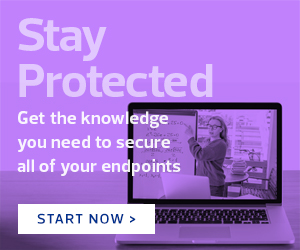Why Schools Should Focus on Teaching Security and Protecting the Cloud
So, what can IT teams do to mitigate these types of risks and ensure secure online learning?
First, it’s important to have the basics down. This includes adopting strong passwords, multifactor authentication, permission controls, content filtering and other endpoint protections.
It’s also crucial for IT and school leaders to collaborate and create a culture of security in their school or district. Cybersecurity training and lessons on digital citizenship are key to that. Weaving these topics into the curriculum is an effective way to help students “make smart, safe and ethical decisions online,” said a majority of K–12 teachers in a 2019 survey conducted by the nonprofit group Common Sense Education. There are plenty of free resources educators can use to engage students in conversations about internet safety, from Common Sense Education’s digital citizenship curriculum to Google’s “Be Internet Awesome” game.
READ MORE: Find out how to boost digital citizenship during remote learning.
But it’s not just students who need regular cybersecurity education; teachers and other school staff need it too. Many cyberattacks are the result of human behavior, says Linnette Attai, project director for the Consortium of School Networking’s privacy initiative and trusted learning environment program.
“It’s often not the technology that fails. It’s individuals behaving in ways that put an organization at risk by not using a complex password, or showing reluctance to using multifactor authentication,” Attai says. “These are the kinds of simple behaviors that we emphasize but often aren’t followed across school systems, where sometimes convenience wins over cybersecurity hygiene.”
DISCOVER: Here’s what one school district learned after conducting a phishing test.
Solutions that help IT monitor, audit and control cloud security risks are also key. With today’s schools increasingly reliant on Software as a Service apps such as Google Workspace (formerly G Suite) and Microsoft 365 Education, it’s even more important for IT teams to have the right protections against threats such as data breaches.
For example, ManagedMethods has an API-based cloud security platform that gives system administrators visibility and control over their district’s cloud apps and the data stored in them. With this platform, admins can see when data is being improperly shared and automate data loss prevention, allowing them to better protect sensitive information and maintain privacy compliance. The platform also helps admins thwart malware attacks, prevent unauthorized account takeovers and detect self-harm signals.
By building a culture of security and understanding cloud computing risks, today’s schools and districts can be better prepared to deliver safe learning experiences online.
This article is part of the “ConnectIT: Bridging the Gap Between Education and Technology” series. Please join the discussion on Twitter by using the #ConnectIT hashtag.







![[title]Connect IT: Bridging the Gap Between Education and Technology](http://www.edtechmagazine.com/k12/sites/default/files/articles/2014/05/connectit.jpg)




